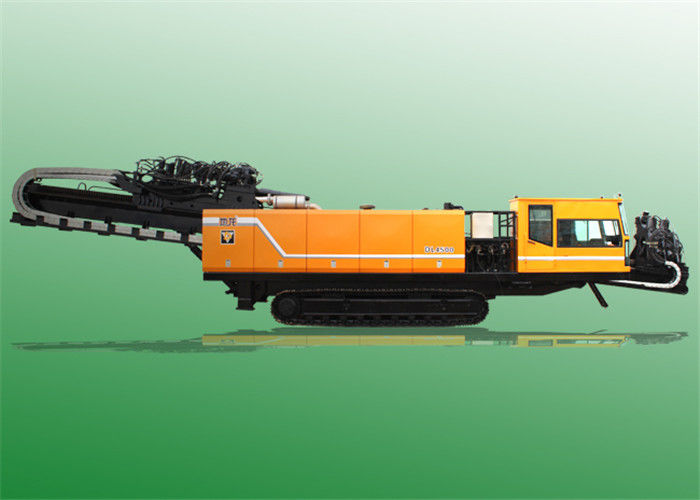A Novice's Manual to Horizontal Directional Drilling

Horizontal Directional Drilling, frequently referred to as HDD, has become revolutionizing the way we install infrastructures and utilities below our urban areas and terrains. This cutting-edge approach allows for the laying of pipes, cables, and other utilities with little surface disruption, making it an ideal choice for cities, ecologically sensitive regions, and efforts needing to minimize ecological effects. As the call for green infrastructure solutions grows, comprehending the principles and advantages of HDD is crucial for professionals across various industries.
In this manual, we will examine the core principles of HDD, focusing on its operational principles, its top advantages in utility installation, and the future prospects of trenchless innovation. We will dissect the HDD process from initiation to completion, compare it with traditional trenching methods, and emphasize the important function it plays in a variety of projects, including fiber optics and utility lines. Whether you are starting a new endeavor or wanting to broaden your expertise, this guide will provide you with valuable insights into the dynamic world of HDD.
Understanding Horizontal Directional Drilling
Horizontal Directional Drilling, or Horizontal Directional Drilling, is a modern technique used to set up subsurface utilities without the requirement for large-scale trenching. This process consists of drilling a small pilot hole through the ground, which is then enlarged to accommodate the pipe or utility being placed. Unlike traditional trenching, HDD allows for the installation of utilities in a horizontal orientation, making it highly efficient and minimally disruptive to the adjacent ecosystem and existing infrastructure.
The procedure begins with a dedicated drilling rig that forms the initial pilot hole. The rig is outfitted with a guidance mechanism that uses sensors to help navigate the drill bit to the target location. Once the pilot hole is finished, the hole is enlarged using various reamers to ensure that there is enough capacity for the utility to be installed. This trenchless approach lessens the amount of surface disruption, enabling projects to proceed with little effect on roads, landscaping, and existing utilities.

HDD is particularly advantageous in city areas where conventional digging can lead to significant bottlenecks and disruption. It is an effective solution for setting up water and sewer lines, telecommunications cables, and even power pipelines. The ability to navigate complex terrains and obstacles makes HDD a flexible option, ensuring that utilities can be set up efficiently and with less chance of damaging nearby structures or ecosystems.
Advantages and Applications of Horizontal Directional Drilling
HDD offers a variety of advantages that make it a preferred choice for multiple utility projects. One of the main advantages is its negligible effect on the environment compared to conventional excavation techniques. Horizontal Directional Drilling can be employed to install pipes and cables underground while preserving the surface, thereby preserving existing environments, reducing the need for extensive site restoration, and minimizing disruption to local ecosystems. This technique is particularly beneficial in urban settings where surface space is limited, and existing infrastructure needs to be maintained.
The versatility of HDD extends to various uses, including drinking water and sewer line installations, telecommunications projects, and services for green energy infrastructure. It is an efficient technique for navigating complex terrains, such as rivers and urban environments, where conventional methods may face substantial logistical challenges. By utilizing HDD, contractors can efficiently lay down necessary services while considering sensitive environmental concerns, making it an optimal selection for projects that demand a thoughtful approach to site management.
As Horizontal Directional Drilling technology continues to evolve, its applications are expanding, and the advancements in equipment and methods are enhancing accuracy and productivity. With the incorporation of GPS and other technologies, HDD can now handle more intricate projects than ever before. From home developments to large-scale pipeline installations, the advantages of HDD are clear—faster project timelines, reduced costs, and a forward-thinking approach to environmental responsibility solidify its position as a premier technique in the building and infrastructure sector.
Future Trends and Advancements in Horizontal Directional Drilling
As the requirement for economical and sustainable infrastructure solutions increases, HDD continues to develop and progress. Advancements in drilling technology facilitate increasingly exact and effective installations, reducing project timelines, and lessening disruptions to the surrounding environment. Horizontal Directional Drilling Bangor Northern Ireland of GPS and advanced monitoring systems provides enhanced accuracy in bore paths, which is crucial in metropolitan environments where room is limited and current services must be avoided.
Eco-friendliness is also influencing the future of Horizontal Directional Drilling. Look at more info is exploring new techniques and materials that further reduce the environmental impact of operations. Eco-friendly drilling fluids and eco-friendly tools are being created, conforming Horizontal Directional Drilling with wider movements toward sustainable construction practices. These developments not only address compliance requirements but also draw in a community-oriented market that prioritizes eco-friendly infrastructure development.
Moreover, the rise of sustainable energy options is creating new opportunities for Horizontal Directional Drilling. Initiatives related to photovoltaic and wind energy systems increasingly rely on HDD to set up critical connections with minimal environmental disturbance. As power providers aim to expand their operations while preserving environmental resources, Horizontal Directional Drilling is poised to play a central role in the transition to a further green energy landscape, further establishing its importance in the building and utility industries.
